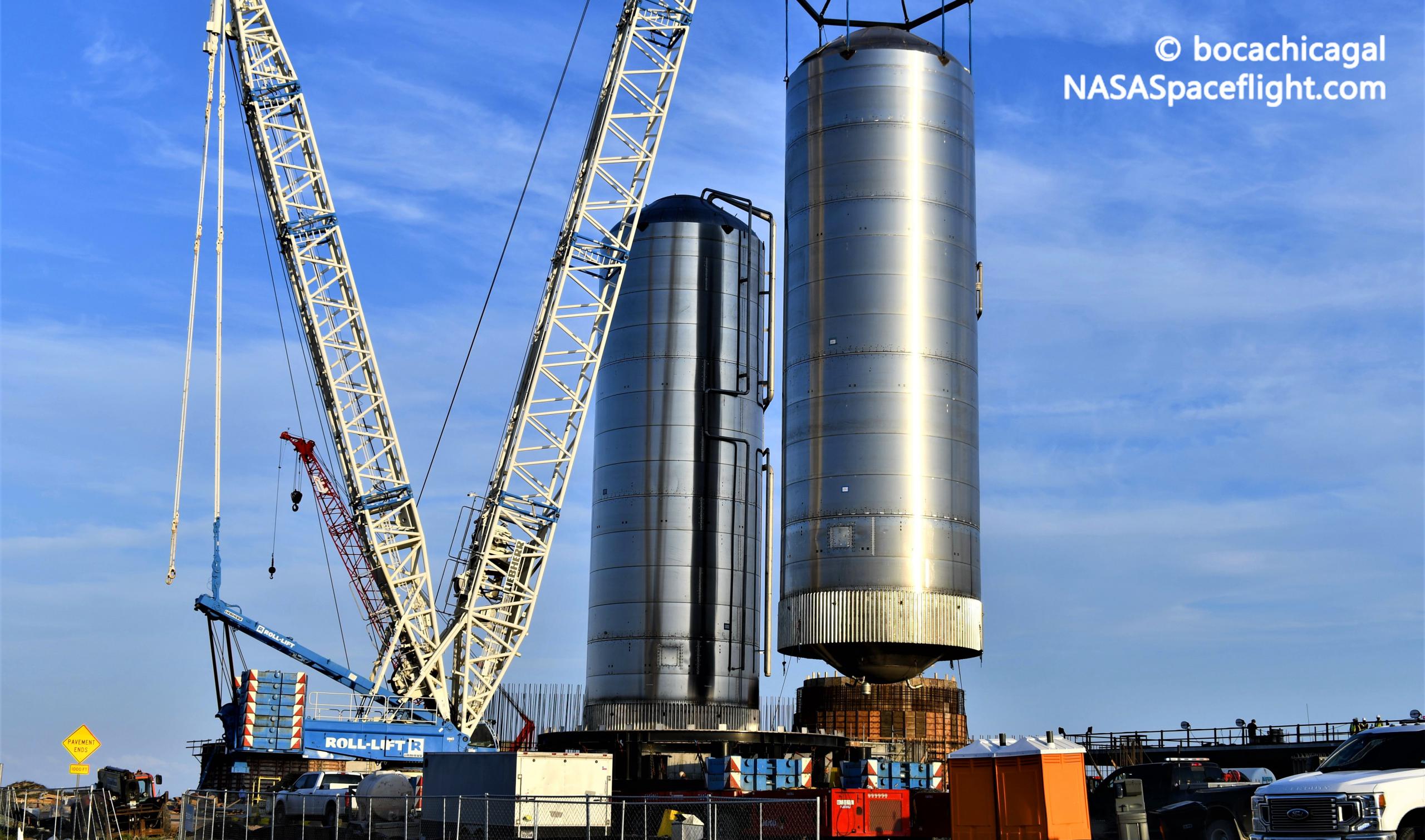
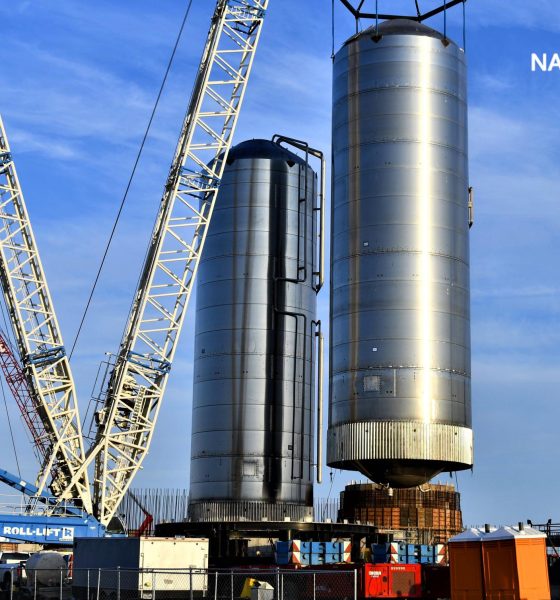
News
SpaceX installs second Starship-derived fuel tank at orbital launch pad
For the second time in two weeks, SpaceX has rolled a ‘Starship-derived’ propellant tank to the next-generation rocket’s first orbital launch pad, continuing a recent burst of construction activity.
Precisely two weeks ago, SpaceX rolled the first of those massive ground support equipment (GSE) propellant tanks the 1.5 miles from its Boca Chica rocket factory to a nearby launch complex. Built with the same parts, facilities, and equipment as flightworthy Starship prototypes, SpaceX’s plans to build grounded storage tanks out of rocket parts went from a complete surprise to initial hardware delivery in less than two months.
Two weeks later, SpaceX has already completed the second of at least seven similar or identical tanks that should be able to store enough propellant for two back-to-back orbital Starship launches – and a third ‘GSE’ tank is just a week or so behind it.
As previously discussed on Teslarati, SpaceX’s decision to use a literal rocket factory to build custom propellant storage tanks is surprisingly revealing with a few reasonable assumptions in place.
SpaceX is effectively taking interchangeable Starship parts, slightly tweaking a handful of them, and turning what could have been a rocket into a propellant storage tank. This is significant because relative to all other rockets in history, even including SpaceX’s own Falcon 9 and Heavy, building storage tanks with unchanged rocket parts on a rocket assembly line would be roughly akin to hiring Vincent van Gogh to paint lane lines.
The existence of self-built propellant storage tanks virtually identical to flightworthy Starship airframes all but guarantees that SpaceX is already building Starships for a few million dollars each – and possibly much less.“
Teslarati.com – 6 April 2021
Aside from potentially being dirt-cheap bulk storage tanks that all but guarantee SpaceX can produce Starship and its Super Heavy boosters for pennies on the dollar of any other rocket in history, SpaceX is quickly demonstrating that it can build a lot of them – and quickly. Parts of Starship prototypes SN17 through SN20 and Super Heavy boosters BN2 and BN3 continue to slowly trickle out of SpaceX’s factory and Starship SN16 is steadily progressing towards completion to take over wherever SN15 leaves off.
However, at least a majority of SpaceX’s focus appears to be set on mass-producing propellant storage tanks as quickly as possible in order to prepare Starship’s orbital launch pad – deep into construction – for flight tests involving Super Heavy. Just last month, following a sourced report from NASASpaceflight.com, CEO Elon Musk confirmed that SpaceX intends to attempt Starship’s first launch on a Super Heavy booster as early as July 2021 – just three months from now.
For obvious reasons, the odds are firmly stacked against SpaceX attempting Starship’s first orbital launch mere months from now, though such an attempt would still be extremely impressive if it happens in 2021 at all. To even attempt that extraordinarily ambitious feat, SpaceX will have to complete at least a barebones ‘rough draft’ of its planned orbital launch complex, including at least four Starship-style GSE tanks.
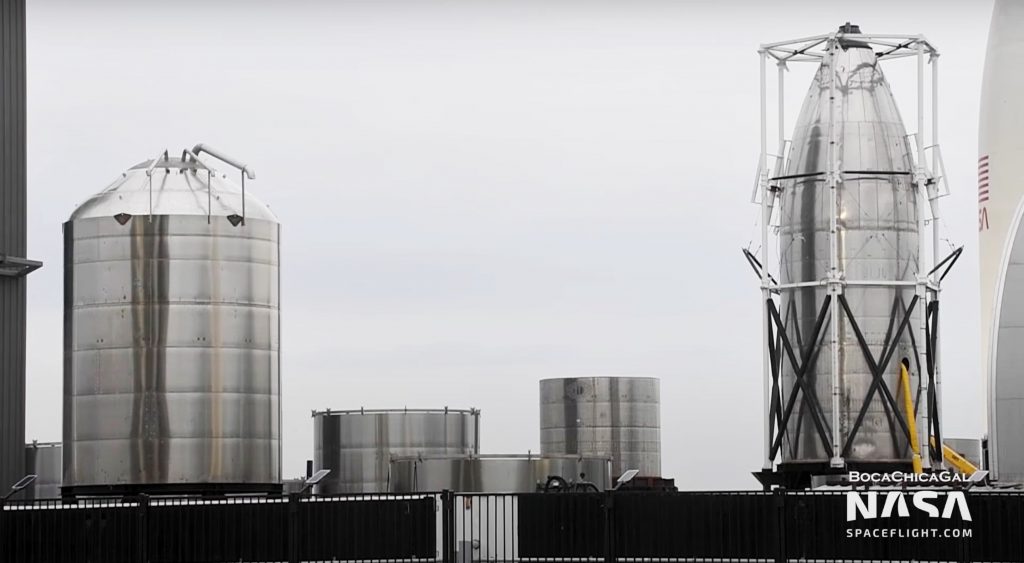
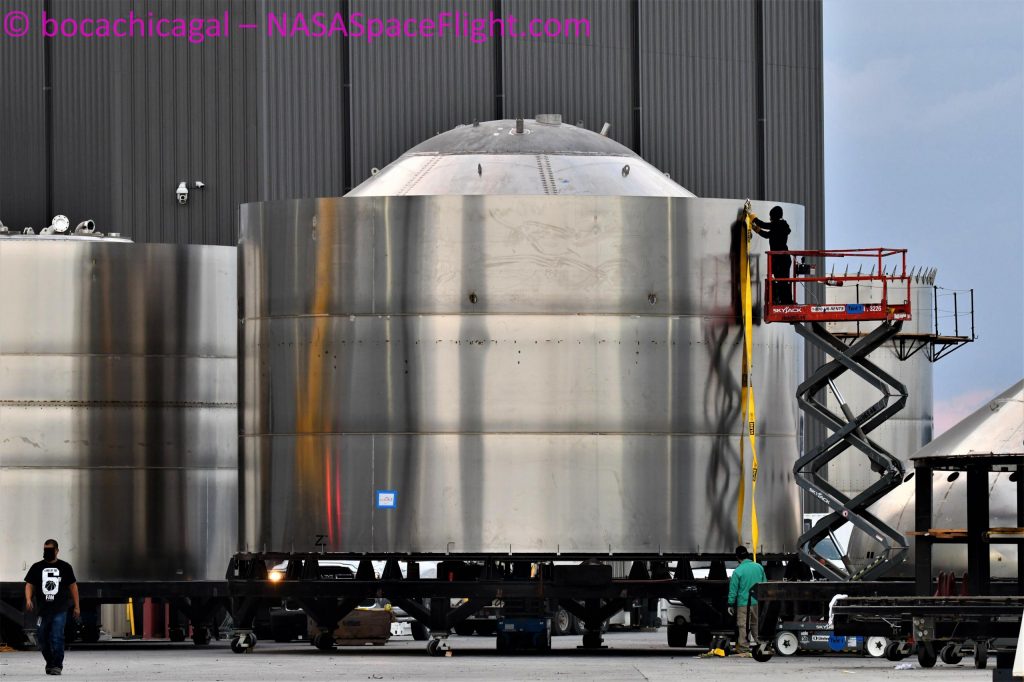
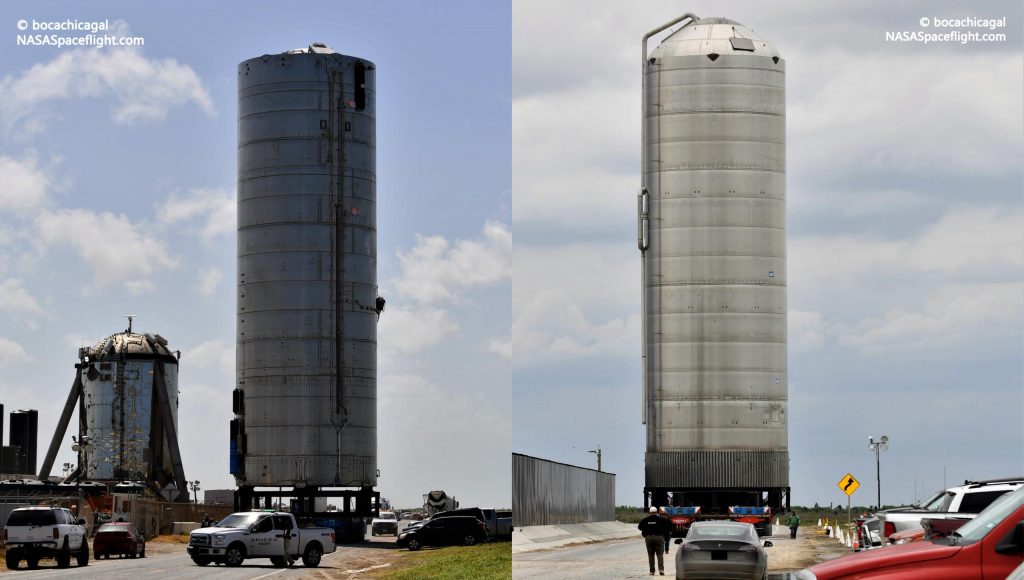
Towards that end, GSE tank #3 (GSE-3) is already more than half complete and parts of GSE-4 are in work, likely meaning that SpaceX will have enough installed propellant storage capacity for orbital Starship launch attempts less than a month from now. It remains to be seen if SpaceX will power through tanks 5 through 7 after 3 and 4 are complete, or if the focus will shift back to Starship and Super Heavy prototype production.
Either way, SpaceX is wasting no time constructing a brand new super heavy-class launch pad and a tank farm the likes of which has never been seen before. For now, we’ll have to wait and see how long it takes Starship and Super Heavy to catch up.

News
Tesla FSD fleet is nearing 7 billion total miles, including 2.5 billion city miles
As can be seen on Tesla’s official FSD webpage, vehicles equipped with the system have now navigated over 6.99 billion miles.

Tesla’s Full Self-Driving (Supervised) fleet is closing in on almost 7 billion total miles driven, as per data posted by the company on its official FSD webpage.
These figures hint at the massive scale of data fueling Tesla’s rapid FSD improvements, which have been quite notable as of late.
FSD mileage milestones
As can be seen on Tesla’s official FSD webpage, vehicles equipped with the system have now navigated over 6.99 billion miles. Tesla owner and avid FSD tester Whole Mars Catalog also shared a screenshot indicating that from the nearly 7 billion miles traveled by the FSD fleet, more than 2.5 billion miles were driven inside cities.
City miles are particularly valuable for complex urban scenarios like unprotected turns, pedestrian interactions, and traffic lights. This is also the difference-maker for FSD, as only complex solutions, such as Waymo’s self-driving taxis, operate similarly on inner-city streets. And even then, incidents such as the San Francisco blackouts have proven challenging for sensor-rich vehicles like Waymos.
Tesla’s data edge
Tesla has a number of advantages in the autonomous vehicle sector, one of which is the size of its fleet and the number of vehicles training FSD on real-world roads. Tesla’s nearly 7 billion FSD miles then allow the company to roll out updates that make its vehicles behave like they are being driven by experienced drivers, even if they are operating on their own.
So notable are Tesla’s improvements to FSD that NVIDIA Director of Robotics Jim Fan, after experiencing FSD v14, noted that the system is the first AI that passes what he described as a “Physical Turing Test.”
“Despite knowing exactly how robot learning works, I still find it magical watching the steering wheel turn by itself. First it feels surreal, next it becomes routine. Then, like the smartphone, taking it away actively hurts. This is how humanity gets rewired and glued to god-like technologies,” Fan wrote in a post on X.
News
Tesla starts showing how FSD will change lives in Europe
Local officials tested the system on narrow country roads and were impressed by FSD’s smooth, human-like driving, with some calling the service a game-changer for everyday life in areas that are far from urban centers.

Tesla has launched Europe’s first public shuttle service using Full Self-Driving (Supervised) in the rural Eifelkreis Bitburg-Prüm region of Germany, demonstrating how the technology can restore independence and mobility for people who struggle with limited transport options.
Local officials tested the system on narrow country roads and were impressed by FSD’s smooth, human-like driving, with some calling the service a game-changer for everyday life in areas that are far from urban centers.
Officials see real impact on rural residents
Arzfeld Mayor Johannes Kuhl and District Administrator Andreas Kruppert personally tested the Tesla shuttle service. This allowed them to see just how well FSD navigated winding lanes and rural roads confidently. Kruppert said, “Autonomous driving sounds like science fiction to many, but we simply see here that it works totally well in rural regions too.” Kuhl, for his part, also noted that FSD “feels like a very experienced driver.”
The pilot complements the area’s “Citizen Bus” program, which provides on-demand rides for elderly residents who can no longer drive themselves. Tesla Europe shared a video of a demonstration of the service, highlighting how FSD gives people their freedom back, even in places where public transport is not as prevalent.
What the Ministry for Economic Affairs and Transport says
Rhineland-Palatinate’s Minister Daniela Schmitt supported the project, praising the collaboration that made this “first of its kind in Europe” possible. As per the ministry, the rural rollout for the service shows FSD’s potential beyond major cities, and it delivers tangible benefits like grocery runs, doctor visits, and social connections for isolated residents.
“Reliable and flexible mobility is especially vital in rural areas. With the launch of a shuttle service using self-driving vehicles (FSD supervised) by Tesla in the Eifelkreis Bitburg-Prüm, an innovative pilot project is now getting underway that complements local community bus services. It is the first project of its kind in Europe.
“The result is a real gain for rural mobility: greater accessibility, more flexibility and tangible benefits for everyday life. A strong signal for innovation, cooperation and future-oriented mobility beyond urban centers,” the ministry wrote in a LinkedIn post.
News
Tesla China quietly posts Robotaxi-related job listing
Tesla China is currently seeking a Low Voltage Electrical Engineer to work on circuit board design for the company’s autonomous vehicles.

Tesla has posted a new job listing in Shanghai explicitly tied to its Robotaxi program, fueling speculation that the company is preparing to launch its dedicated autonomous ride-hailing service in China.
As noted in the listing, Tesla China is currently seeking a Low Voltage Electrical Engineer to work on circuit board design for the company’s autonomous vehicles.
Robotaxi-specific role
The listing, which was shared on social media platform X by industry watcher @tslaming, suggested that Tesla China is looking to fill the role urgently. The job listing itself specifically mentions that the person hired for the role will be working on the Low Voltage Hardware team, which would design the circuit boards that would serve as the nervous system of the Robotaxi.
Key tasks for the role, as indicated in the job listing, include collaboration with PCB layout, firmware, mechanical, program management, and validation teams, among other responsibilities. The role is based in Shanghai.
China Robotaxi launch
China represents a massive potential market for robotaxis, with its dense urban centers and supportive policies in select cities. Tesla has limited permission to roll out FSD in the country, though despite this, its vehicles have been hailed as among the best in the market when it comes to autonomous features. So far, at least, it appears that China supports Tesla’s FSD and Robotaxi rollout.
This was hinted at in November, when Tesla brought the Cybercab to the 8th China International Import Expo (CIIE) in Shanghai, marking the first time that the autonomous two-seater was brought to the Asia-Pacific region. The vehicle, despite not having a release date in China, received a significant amount of interest among the event’s attendees.








